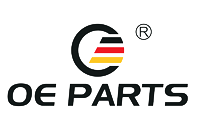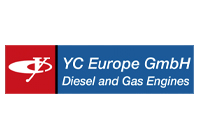Shentou provides on site services
such as factory audit and pre shipment
inspections in China
such as factory audit and pre shipment
inspections in China
Shentou Services
Quality Risks with Casting Product Production
Casting products account for a significant portion of automobile parts, such as engine cylinder, cylinder head, transmission housing, intake & exhaust manifold, crankshaft, camshaft, piston, wheel hub, brake disc, brake drum, etc. According to industrial statistics, casting products account for approximately 33% of all automobile parts in the US, the percentage is less than 20% in China. About 10.5% of the components of a finished vehicle are iron casting, and another 6.4% are aluminum casting.
These casting pasts are not only of large volumes, they also require high quality. Buyers of such casting parts should be concerned with the following four key production processes for casting where the potential quality risks are the greatest.
The mix ratio of raw materials for casting and the control of production with different materials using the same casting line
Foundries will decide on the casting mixture based on the materials required by customers. The main raw materials such as pig iron, steel scrap and returns are then added into the melting furnace with the use of a crane magnet.
The potential risks during this process include:
○ If the storages are clearly marked to identify the different raw materials such as pig iron, scrap steel and the returns, to prevent wrong materials from being fetched;
○ With factories producing casting products with different material on the same line, such as grey iron, ductile iron, vermicular graphite iron and so on, it is important to check if the returns storages are also marked for different materials, to prevent wrong or missing markings of the storages;
○ Lastly it is important to check if returns of different materials are mixed in the same return storage, to prevent the misplacement of the returns.
Incorrect storage marking and mixed materials will result in inaccurate casting mixture, making chemical composition and mechanical property of the melted iron falling short of the requirement. If returns of grey iron are mixed in the production of ductile iron products, for example, the products’ tensile strength will be significantly reduced, which are fatal to the safety parts of the brake system.
If the order volumes can meet the capacity requirement of the casting line, the better strategy is to ask for a dedicated line for single material production.
Control of the chemical composition of the molten iron
One of the key processes in melting for casting products is the control of their chemical composition, i.e. to ensure that the 5 elements, namely carbon (C), sulfur (S), silicon (Si), manganese (Mn), and phosphorus (P), are within the required material specifications.
But how they should be controlled, what tests should be used, with what methods and standards, these should be determined before the start or production in order to meet the customer requirements.
1. It is important to confirm with customers beforehand on what standards to follow, such as Chinese, European or American, as well as the acceptance criteria and testing methods.
2. In the melting process, different factories have different methods to control the main carbon content along with the other chemical elements. Typically the carbon silicon testers at the furnace, the spectrometer and/or the carbon sulfur tester are used, but the readings from these three methods are all slightly different.
3. When customers have no specific requirement on how the carbon content is tested, the use of carbon sulfur tester for testing the carbon content, based on standards of China’s foundry industry, is generally accepted and their readings are usually considered the most authoritative.
4. Customers sometimes complain that the products they’ve received show a lower carbon content which do not meet the technical requirement. But the foundries would then produce test reports for carbon content from the carbon silicon tester at the furnace to show that the results meet the requirement. The discrepancies are usually results of different testing methods by the two parties, with customers using spectrometers to obtain the carbon content level.
5. What type of tests are the most reliable? Other than confirming the acceptance standards and testing methods with customers first, the experienced foundries would use carbon silicon tester at furnace for quick analysis to adjust the carbon content of the molten metal and use the carbon readings from the carbon sulfur testers as the basis for conformity, while relying on the spectrometer readout for the other elements. Moreover, they would periodically calibrate the carbon sulfur testers and the carbon silicon testers at furnace, and compare the carbon readings from the carbon sulfur testers with that of the carbon silicon testers at furnace to ensure consistence between the test results from the two methods.
Control of in-furnace nodulizing & inoculating of nodular cast iron
Iron smelting, nodulizing and inoculating are three of the key processes in the casting of nodular cast iron. The nodulizing and inoculating effect of the molten iron directly impacts the forms of graphite precipitates, eutectic solidification characteristics and cast tissue qualities.
Most foundries adopt the sandwich process for nodulizing: place the nodulizing agent and 60% of the inoculating agent (first inoculating) in the furnace first. After the molten iron is poured into the furnace, another 30% of the inoculating agent is added (second inoculating), and the third inoculating with 10% agent is added during casting. Usually the total inoculating time is within 50 to 80 seconds.
It is critical that real-time control is applied over the key processes such as iron smelting, nodulizing, inoculating, and the quality status of the molten iron, so as to avoid the deteriorating of molten iron as a result of either insufficient or excessive nodulizing and inoculating.
For professional buyers of nodular cast iron products concerned with the quality control of the nodulizing and inoculating process, it is important to check if the temperature of the molten iron at pouring and the particle size and amount of the nodulizing and inoculating agents meet the requirement of the control plan or operation instruction. When appropriate the incoming material inspection records and on-site records should be spot-checked to validate the compliance with the requirement of Advanced Product Quality Planning (APQP).
Control of casting temperatures & pouring time
The temperatures of molten iron before transfer and that at pouring are controlled differently depending on the practices of different foundries and for different products, it is hard to have a unified temperature standard. The temperatures are related to the casting shape, size and pouring time. Factories would determine the molten iron temperature and that at pouring for specific products at the time of process design and validation. The parameters and standards for process control of each product is entered into the control plan to guide the testing, monitoring and management of the temperature and duration in onsite production.
For nodular cast iron, it is usually no more than 8 minutes from nodulizing to the end of pouring, with 50 to 80 seconds for nodulizing. Longer pour time may lead to nodulizing decaying which makes graphite grade below technical standards and therefore results in casting scraps. With stream inoculation, the inoculant flow rate should be kept at constant speed, without segment or large flow. Excessive inoculation may result in microporosity or decreased pearlite volume.
As a non-technical buyer of casting parts, it is important to watch for the following when inspecting or auditing a supplier’s foundry site: the temperatures of molten iron before transfer, pre-pouring, and when pouring the last mold, as well as the total time from the beginning to the end of the pour. We should understand whether the site operators are taking the temperature measuring on site, the pour duration is effectively monitored, the testing and monitoring results meet the requirement of the parameters and targets in the control plans or the operation instructions, records are kept and the recordings match the measurements. It is necessary to spot-check records of temperature and duration for the first 3 to 5 melting to validate that the process control capability of batch production meets the requirement of planning.
This article was first published in April, May, June and July of 2018
keywords:Product Development Project Management Services Post COVID-19 Factory Audits







